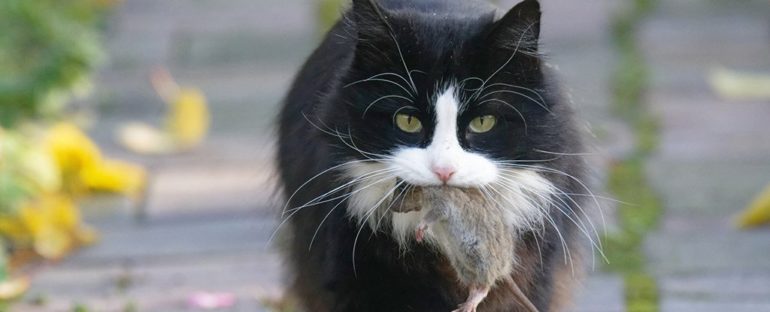Most cat owners know that allowing your snuggly pet outdoors puts wildlife at risk. In Australia alone, cats kill over 1.5 billion native animals a year. But some cat owners still prefer to let their cats roam free outside, often out of concern over their feline’s welfare if kept indoors 24/7.
But now a small study by researchers in the UK suggests there may be another, simple way to make cats bring less prey home, without keeping them inside full-time – all you need to do is play with your furry friend more and give them a meatier diet.
It’s important to note that this isn’t going to stop cats hunting all together. But the researchers found that five to 10 minutes of daily play with an owner resulted in cats bringing home 25 percent less prey animals.
And those pets that were fed meals where the protein came from meat (instead of soy or some other grain) brought back 36 percent less prey.
“Reductions in predation can be made by non-invasive, positive contributions to cat nutrition and behaviour that reduce their tendency to hunt, rather than impede their hunting,” the team – lead by University of Exeter wildlife scientist Martina Cecchetti – wrote in their new paper.
“These measures are likely to find support among cat owners who are concerned about the welfare implications of other interventions.”
Over 12 weeks, the team looked at 219 households in southwest England which owned 355 cats. Thirty cats were given a bell to wear, 33 were given a ‘birdsbesafe‘ colourful scrunchie to scare off prey, 41 were given a puzzle toy that dispenses food to distract them, 40 were given a ‘meatier’ diet, and 38 were played with daily.
Weirdly, the puzzle seemed to actually make cats hunt more. But apart from that, all of the interventions tested lowered the number of prey animals cats brought home.
The ‘birdsbesafe’ scrunchies actually had one of the better effects on birds – the colourful collar reduced the number of birds captured and brought home by 42 percent. But it didn’t change the percentage of mammals caught.
Overall, a meatier diet and regular play were best for reducing general prey numbers.
“Some cat foods contain protein from plant sources such as soy, and it is possible that despite forming a ‘complete diet’ these foods leave some cats deficient in one or more micronutrients – prompting them to hunt,” said Cecchetti.
“However, meat production raises clear climate and environmental issues, so one of our next steps is to find out whether specific micronutrients could be added to cat foods to reduce hunting.”
There are a couple of other things we need to keep in mind with this paper, though.
Firstly, is that even with lower numbers, there’s still wildlife being brought home. Especially in places like Australia, this is a huge issue for vulnerable native animal populations.
Then, there’s also the fact that the study only looked at prey brought home – which may only be a small percentage of the prey that cats are actually catching.
“A limitation of this and similar studies relates to using the numbers of prey brought home by cats as a proxy for the numbers of animals they kill,” the team writes.
They cite two different studies which attached cameras to domestic cats. One found that only 23 percent of prey was brought home, while the other showed that number was only 18 percent. The majority of prey was left behind or eaten in situ.
So, whatever your cat brings home is likely only a very small percentage of the prey they’re actually catching.
“The RSPCA cares for both cats and wild animals and we want to provide advice to cat owners that will benefit both cat and wild animal welfare,” said Adam Grogan, Head of Wildlife at the RSPCA.
“This project provides us with alternatives for cat owners that are simple and effective and so easy to adopt.”
The research has been published in Current Biology.



